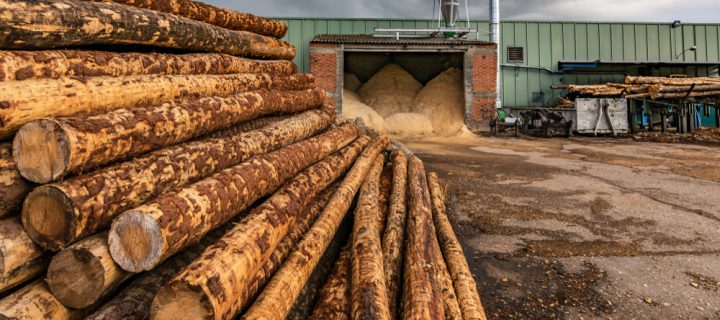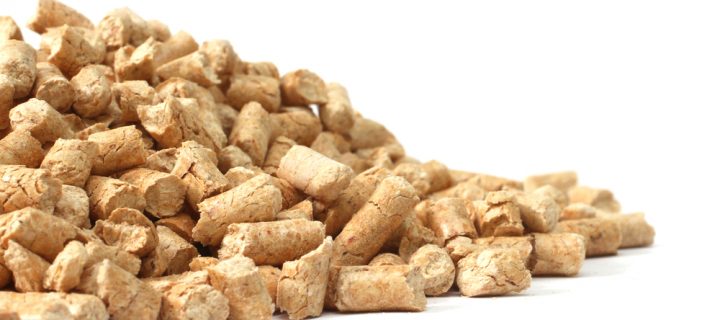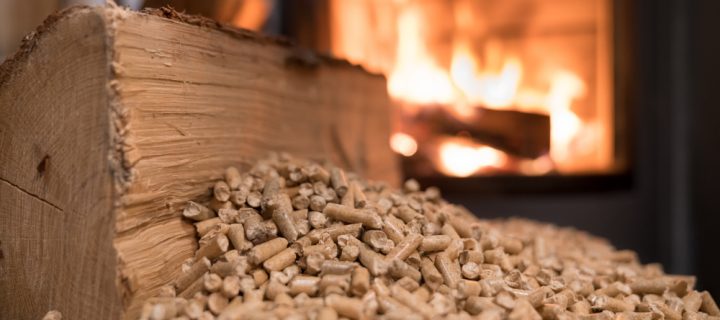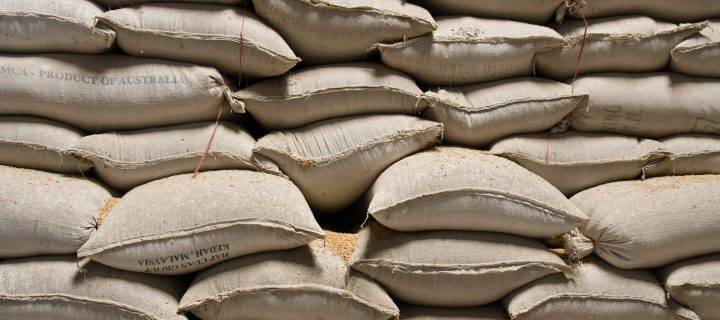Wood waste is the final unwanted product from sawmills plus lumber-jacking and branch pruning. If you are unsure what to do with your unwanted excess timber, don’t worry as P.H Winterton offer a sawmill waste collection service. Industries that contribute to the creation of wood waste include furniture, sawmill, pulp and paper, plywood mills and particleboard mills. For this blog, we are going to explain the different types of wood waste and how it should be stored. The Different Types of Wood Waste There are four main types of wood waste, which are problem wood waste, used wood, scrap wood plus natural wood waste. Examples of problem wood waste are unwanted laminated, wood waste with preservative agents is a blend of problem wood waste and regular wood. Used wood waste consists of deserted wooden building portions, wooden furniture and wood waste from materials like colour pallets. Scrap wood waste is produced in workshops by carpenters, furniture factories, construction sites plus sawmills. Natural wood waste is leftover sawdust and remaining wood pieces from logging activities. Best Storage Methods for Wood Waste Waste collecting bins are pile-up stations of different sizes, shapes and materials which help reduce the spread of litter. Different types of waste collecting include localised containers, centralised bin stations, waste transfer carts or transfer balers and waste yard dumpsters. Localised containers are also known as desk-side bins and are individual refuse bins whose purpose is to increase the efficiency of waste handling. They encourage people to keep their rubbish organised and promotes the recycling of wood waste. Centralised bin stations are placed in strategic points and are the recipients of waste that are assembled from the localised containers. Most furniture workshops have this type of bin in their hallways and corridors which stores wood waste from employees’ work stations. Their main purpose is to receive refuse from centralised stations and move or cut them if it is a transfer baler. They are large containers that carry more waste and are more economical when compared to buying a number of high traffic containers. The refuse yard dumpster is the final designated point to store large amounts of waste and are mostly huge and receive tonnes of wood waste from...
Read Moreabout Preparing for Sawmill Waste CollectionSustainability is more important than ever with the negative effect of climate change on the planet; with wood pellet stoves being the most environmentally friendly heating option. P.H Winterton and Son are the leading suppliers of biomass fuel, with our wood pellets sourced from our sawmill waste collection service. Traditional wood-burning stoves have a number of benefits, using a renewable fuel source that will reduce your heating bills. The most effective pellet stoves can be up to 90% more efficient than standard wood burners because they burn pellets that contain a mixture of sawdust, bark and other biodegradable materials. The level of airborne particulates that the pellets produce is also relatively low. Just like a gas boiler, you can switch pellet burners on and off on-demand giving you an instant source of heat. The burner can be set to your specific requirements, which means you get the most out of the appliance. How Do Wood Pellet Stoves Work? Pellet stoves burn compressed wood or biomass pellets creating a source of heat by slowly feeding fuel automatically from the storage container into the burn tray. A constant flame is then created and monitored to ensure you are getting maximum efficiency. The built-in hopper allows pellet burners to operate autonomously for about 12 hours under full load. One of the main benefits of pellet stoves is how easy they are to use. With automatic ignition, you can be assured your pellet burner will only start burning when needed, which saves you money in the long-term. They will produce very small amounts of ash and chimney creosote that reduces the number of times your chimney needs cleaning. Regarding fuelling your pellet stove, pellets are convenient and cost-effective when compared to other fuel sources. Reasons to Use Pellet Stoves Fuel will only need replenishing once a day, whereas appliances fuelled by wood, which needs regular top-ups every few hours. Pellets release much lower emissions when compared to fossil fuels Pellet stoves are highly efficient due to the even distribution of the heat by an extractor. Get in Touch for More Information If you have any questions about biomass fuel and wood pellet stoves, please do not hesitate to contact us...
Read Moreabout What are the Advantages of Wood Pellet Stoves?P.H Winterton is one of the countries leading suppliers of biomass fuel, which is fueled by wood pellets recycled from our sawmill waste collection service. For this blog, we are going to talk you through how wood pellet stoves work and why you should consider using one. How Do Wood Pellet Stoves Work? Wood pellet stoves do look similar to wood-burning stoves and fireplaces but they are a more environmentally friendly and low-cost heating option. In a time when climate change and environmental awareness is at the forefront of many home and business owners minds, they have become even more popular. The wood pellet that power the stoves look similar to rabbit food and are considered eco-friendly because they are cheap and easy to manufacture. They also have a very low pollution rate. The Mechanics of Wood Pellet Stoves Wood pellet stoves operate with electricity, with pellets loaded into the hopper which is either located on the top or bottom of the unit. The auger is a motorised device which delivers the pellets from the hopper into the burn pot with the auger’s speed determining the stove’s temperature. The burn pot is based in the combustion chamber and is then ignited creating a hotter flame because of how heavily compressed and dense and low in moisture the pellets are. The pot serves as a carburettor for the stove, mixing the air and fuel which creates combustion with the ashes from the burnt pellets captured in an ash pot which needs cleaning periodically. Unlike a regular fireplace, pellet stoves heat a room through convection, which is the transmission of heat that occurs from a forced combination of cool and hot air currents. The convection blower pulls cool air in from the room, passing over the fire in the burn pot and makes the flame hotter enabling the pellets to burn evenly and efficiently. The heated air will move across a heat exchanger, designed to transfer clean air into your home through the room blower. This heat exchanger acts like a furnace when used in combustion because its located in the combustion chamber preventing the outside of the stove becoming too hot. The exhaust blower will push out gases from a...
Read Moreabout Wood Pellet Stoves Explained by PH WintertonOne question we often get asked here at P.H Winterton is, how long does it take to clean equine bedding out of stalls? While it is quite a labour-intensive process it is recommended to do this, in some cases every day. If you are looking to streamline this exercise, take a read of some of our suggestions regarding stall cleaning below. 5 Cleaning Methods for Stalls Invest in Quality Rubber Stall Mats – Rubber stall mats provide a smooth base for efficient cleaning plus they are non-absorbent and easy to disinfect. Thick mats provide cushioning for horses’ legs and feet which is helpful for arthritic horses and those prone to founder or laminitis. Choose Your Bedding Wisely – Finer bedding such as sawdust shavings is the best option. Just be careful how much bedding you use as if you overbed you will spend more time cleaning. Also, you will face an increased potential for dust exposure plus mould and allergens which can lead to respiratory problems. On the other hand, inadequate bedding or failing to clean stalls will increase the risk of problems linked to air quality. Consider Bedding Conditioner/Drying Agent – Equine bedding has a high moisture content that can really hold onto ammonia, especially when combined with humid air can lead to respiratory distress in horses. Consider a dry powder bedding conditioner and drying agent which is designed to keep bedding dry and reduces the potential for bacterial infection. Pick Stalls Regularly – Taking even just a few minutes to pick your horse’s stall before you leave each night can make mucking out much easier. This helps keep your horse happier, healthier and cleaner plus it helps cut back on odours and flies. It is particularly effective for horses that are a bit restless in their stalls and tend to grind manure into the equine bedding. Extend Turnout Time – Fewer hours horses spend indoors, the less time you will spend cleaning up after them. A regular turnout provides a number of benefits too. Equine field antics such as bucking, kicking, rolling, snorting and whining are all-natural movements that help clear respiratory systems and stretch sore and tight muscles. Healthier digestion is another added benefit of more...
Read Moreabout Cleaning Equine Bedding from Stalls EffectivelyHave you ever wondered what the best bedding material is for your horse? Here at P.H Winterton and Son, we believe that sawdust shavings are the best choice and we will explain in this post why. Here are the criteria you should have before purchasing horse bedding – Safe for horses Easily available Absorbent Easy to store Cost-effective Easy to handle and pick manure from Many horse owners think that they need to bed their stalls like our own beds, making them soft and fluffy. But horses by nature do not require a soft and fluffy bed unless they are a bit older and thus need to lie down for longer periods of time. The main purpose of horse bedding is to absorb urine and moisture. Explaining the Appeal of Sawdust Shavings Nothing quite looks and smell like a stall that is freshly bedded with traditional sawdust shavings of pine or fir. Different types of shavings are more absorbent than others, with kiln-dried shavings having lower moisture content than heavier chip-like shavings. Look to maintain good ventilation in the barn once your shavings have been laid and keep an eye out for cobwebs and dust layers. Having bagged sawdust is easier to use, convenient to store plus they are far less dusty than loose equine bedding. Should I Consider Rubber Stall Mats? Using rubber stall mats means you will be able to easily scoop up manure and soiled bedding and leave clean bedding behind. This also gives your horse a healthy surface to stand on with enough ‘give’ for a cushioning effect. Talk to the Horse Bedding Specialists If you need new horse bedding for your barns, please do not hesitate to contact P.H Winterton and Son today. We offer three different equine bedding options to match any budget or quality...
Read Moreabout Why Sawdust Shavings are the Best Horse BeddingWith a number of areas across the country being placed in Tier 3 COVID-19 constrictions, it is crucial to know what horse riders can and cannot do. The three-tier system, which came into effect on Wednesday 13th October has different restrictions in each case. As the leading provider of equine bedding, P.H Winterton and Son understand the importance of adhering to these new regulations whilst also keeping your horse fit and healthy. The Latest COVID-19 Equestrian Advice Explained The most recent British Equestrian advice still applies and riders with specific queries about their area will need to check the advice from their local authority. Governing bodies have also issue particular guidance for members, for example, British Showjumping has reminded members that it is their personal responsibility to stick to the rules for their locality plus following the sport protocols if attending shows. British Eventing has stated, “All members should consider any restrictions in their own area before travelling to an event. It is the responsibility of each member to ensure they are complying with the requirements.” They have also encouraged, as a priority, to ballot out members who would now not be able to compete. British Dressage (BE) has confirmed that thanks to the COVID-19 secure protocols and procedures in place, organised British Dressage can continue ‘in all areas’ provided that all COVID rules are adhered to. This includes the ‘rule of six’, social distancing and hygiene measures. BE have updated its sport resumption protocols to add that all persons on the event site need to check lockdown, rules and COVID restrictions in their area plus additions to protocols already put in place for their events. Top Quality Equine Bedding P.H Winterton currently offers three types of equine bedding to match any budget and requirements. We have recently started selling Zebra Fibre Bedding, which is extremely absorbent which makes it easier to clean out of stables. Our Cheshire Choice bedding is our premium selection of bedding made from 100% of wood shavings but if you are working to a budget we also have Economy Bale bedding. If you have any questions about any of our products please feel free to contact us...
Read Moreabout How Tier 3 Restrictions Affect Horse Riders





